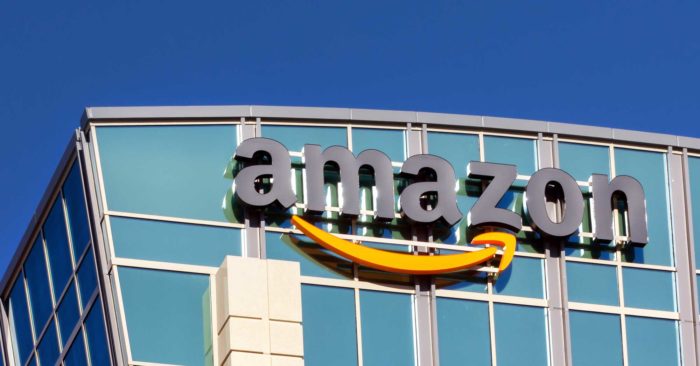What Do Amazon’s Top 20 Finalists Have in Common? They’re Welcoming, Diverse Communities
Date: January 23, 2018

Amazon just announced the 20 finalist metropolitan areas for its second headquarters. Amid the lively debate about which metros made the cut and why, a pattern has emerged.
What do these cities have in common? What made them so enticing when more than 200 cities around the country were competing? Why does Amazon see them as more exciting, more talent rich, more viable places in which to invest billions of dollars? A common thread behind each of them is that they actively recruit, retain, and integrate immigrants. It’s part of their economic strategy. And as Amazon’s decision shows, it’s working.
Among other qualifications, Amazon is seeking a “metropolitan area… with the potential to attract and retain strong talent.” According to research from New American Economy, every single U.S. metro area chosen is home to a diverse, growing workforce thanks in part to policies that welcome immigrants. (NAE’s analysis excludes Toronto, though it is among the most diverse cities in the world at 46.1 percent foreign born).
In the original Request for Proposal (RFP), Amazon laid out a list of criteria for its ideal second location, including proximity to a significant population center, a highly educated labor pool, and the presence and support of a diverse population.
Many of the cities have seen strong, positive population growth thanks to immigration. Some, like Pittsburgh, can point to this growth for staving off population decline.
Immigrant Share of Population
| Metro Area | Immigrant Share of Total Population |
| Atlanta, GA | 13.4% |
| Austin, TX | 14.5% |
| Boston, MA | 17.9% |
| Chicago, IL | 17.5% |
| Columbus, OH | 7.6% |
| Dallas, TX | 17.7% |
| Denver, CO | 12.5% |
| Indianapolis, IN | 6.3% |
| Los Angeles, CA | 33.6% |
| Miami, FL | 39.2% |
| Montgomery County, MD | 20.8% |
| Nashville, TN | 7.8% |
| Newark, NJ | 27.3% |
| New York City, NY | 28.8% |
| Northern Virginia | 28.2% |
| Philadelphia, PA | 10.2% |
| Pittsburgh, PA | 3.4% |
| Raleigh, NC | 11.8% |
| Washington, DC | 22.6% |
Of course, a large and diverse population on its own is not enough to staff a major, international headquarters. Amazon estimates that HQ2 will create or support 50,000 jobs—which means that the city chosen will need a strong workforce at the ready. Similar to the United States as a whole, immigrants in most metros are more likely to be of working age—defined as being between the ages of 25 and 64—than the U.S.-born population. Among the cities chosen by Amazon, in every single case, the immigrant population is more likely to fall within the working age range, beating the U.S.-born rate by an average of 22 percentage points.
Working Age Share of Population
| Metro Area | Working Age Share of Immigrant Pop (Working Age Share of U.S.-Born Pop) |
| Atlanta, GA | 76.6% (50.9%) |
| Austin, TX | 76.4% (52.7%) |
| Boston, MA | 71.8% (51.1%) |
| Chicago, IL | 75.1% (49.6%) |
| Columbus, OH | 72.5% (53.0%) |
| Dallas, TX | 77.0% (48.7%) |
| Denver, CO | 72.9% (53.7%) |
| Indianapolis, IN | 72.0% (52.4%) |
| Los Angeles, CA | 74.5% (44.2%) |
| Miami, FL | 68.1% (44.1%) |
| Montgomery County, MD | 75.7% (49.6%) |
| Nashville, TN | 73.9% (52.8%) |
| Newark, NJ | 73.9% (52.8%) |
| New York City, NY | 72.6% (47.4%) |
| Northern Virginia, VA | 76.4% (56.4%) |
| Philadelphia, PA | 72.5% (51.5%) |
| Pittsburgh, PA | 66.4% (53.1%) |
| Raleigh, NC | 75.9% (52.3%) |
| Washington, DC | 74.5% (70.3%) |
The RFP mentions the importance of an educated workforce no less than six times, stressing Amazon’s desire for access to a highly educated talent pool. Nationally, immigrants are 17.2 percent more likely to hold a graduate degree than people born in the United States. This enables immigrants to fill certain roles at the high end of the workforce and skills spectrum that might otherwise remain unfilled. Such unfilled positions could hurt local business or lead employers to relocate elsewhere (as some companies like Microsoft have done). The table below analyzes each metro area’s immigrant population based on educational achievement. In many cases, the share of immigrants with a graduate degree rivals or exceeds the rate for the U.S.-born, by an average of about 0.5 percentage points.
Number of Foreign-Born Residents with Graduate Degree
| Metro Area | Number with Graduate or Professional Degree |
| Atlanta, GA | 103,677 |
| Austin, TX | 42,018 |
| Boston, MA | 158,045 |
| Chicago, IL | 194,044 |
| Columbus, OH | 27,228 |
| Dallas, TX | 129,648 |
| Denver, CO | 35,086 |
| Indianapolis, IN | 17,186 |
| Los Angeles, CA | 368,574 |
| Miami, FL | 201,447 |
| Montgomery County, MD | 14,115 |
| Nashville, TN | 14,687 |
| Newark, NJ | 18,488 |
| New York City, NY | 704,703 |
| Northern Virginia, VA | 36,663 |
| Philadelphia, PA | 106,193 |
| Pittsburgh, PA | 23,292 |
| Raleigh, NC | 29,564 |
| Washington, DC | 255,177 |
Further, and perhaps most importantly, the competing metro areas recognize the important role immigrants play in their economic success, and have enacted welcoming policies meant to attract international residents, foster integration and drive economic growth. More than half of the cities selected have established a citywide office or similar effort dedicated to immigrant integration (Atlanta, Boston, Chicago, Columbus, Dallas, Denver, Los Angeles, Nashville, New York City, Philadelphia, and Pittsburgh). And more than one-third have participated in the Gateways for Growth Challenge, a program launched in 2015 to develop multi-sector plans for welcoming and integrating immigrants. The program is carried out on the ground through partnership with chambers of commerce, local government offices, and other civil society partners to recognize and highlight the contributions immigrants are making, and to develop concrete strategies and recommendations to maximize these contributions. Such programs foster strong business growth while maintaining strong communities—the ideal combination for a large company looking for its next headquarters location.
Footnotes:
- Northern Virginia numbers are extrapolated from NAE research on Virginia’s 8th Congressional District
- Newark, NJ numbers extrapolated from NAE research on New Jersey’s 10th Congressional District
- Montgomery County, MD numbers extrapolated from NAE research on Maryland’s 6th Congressional District



